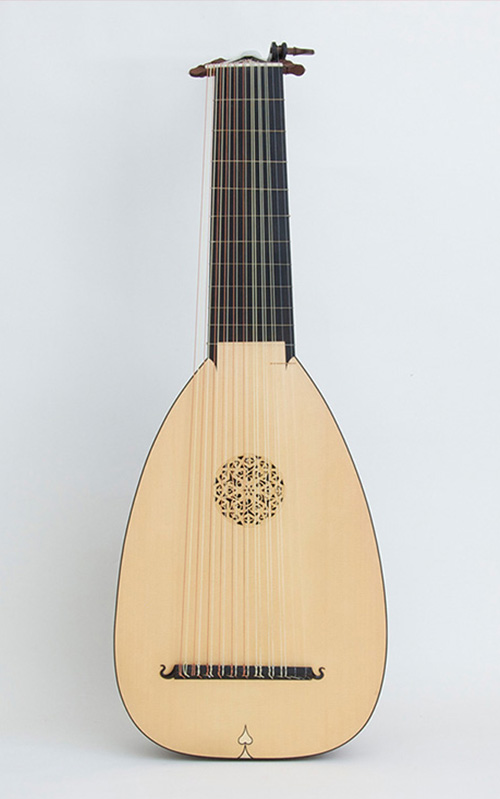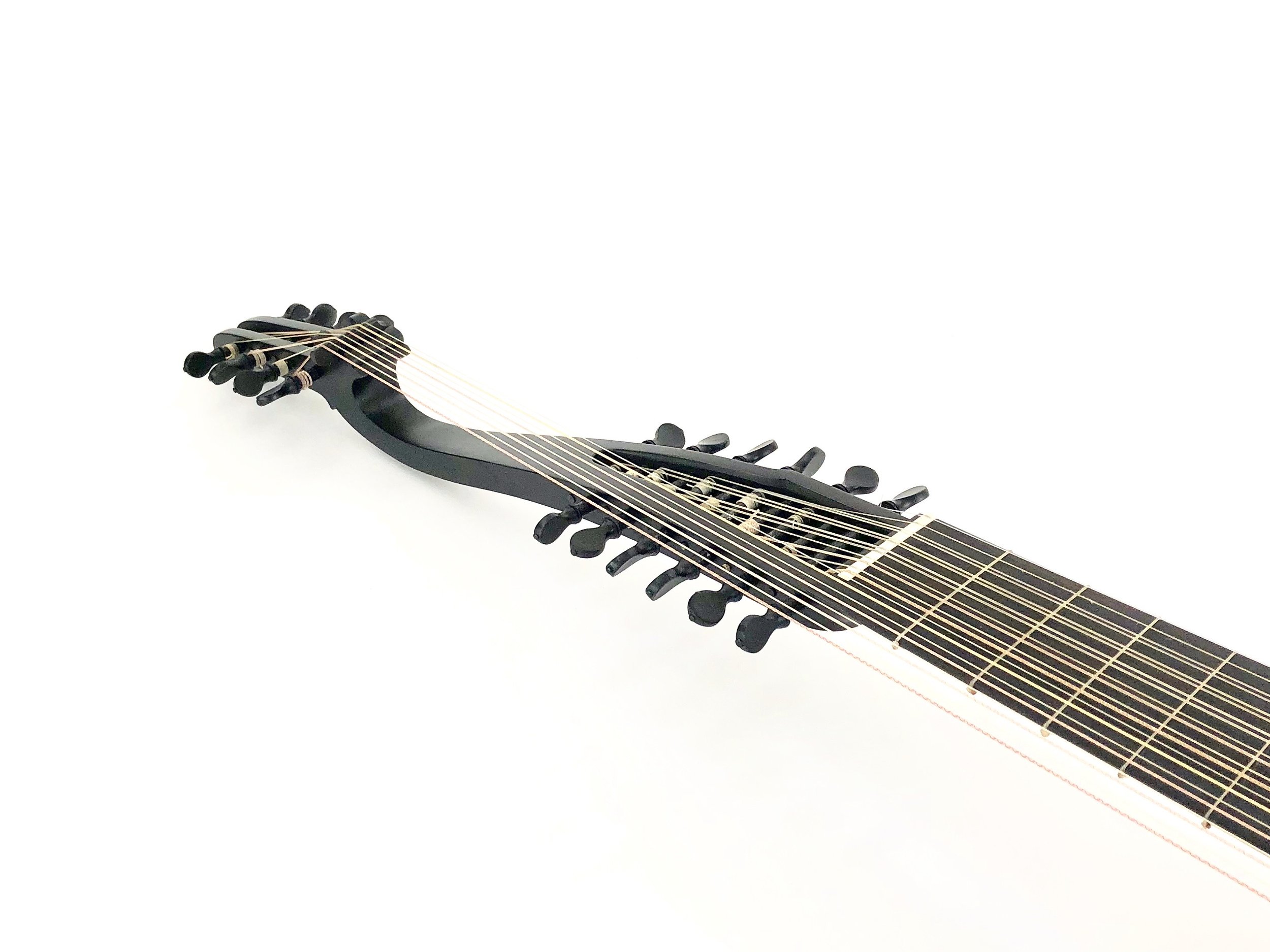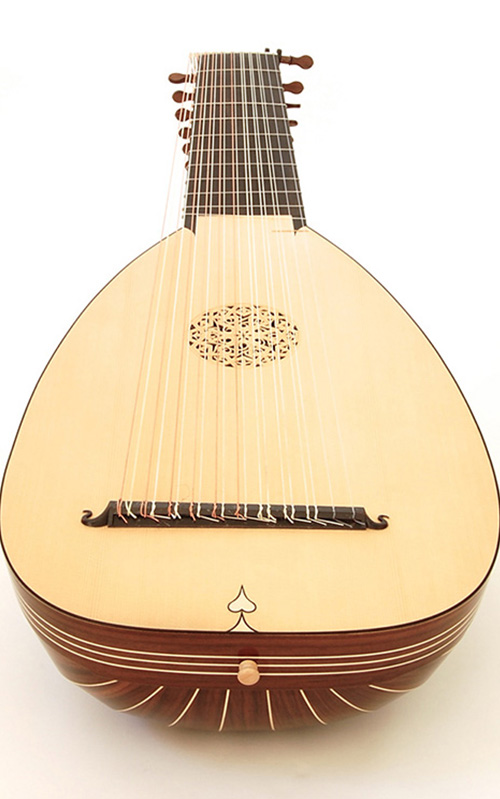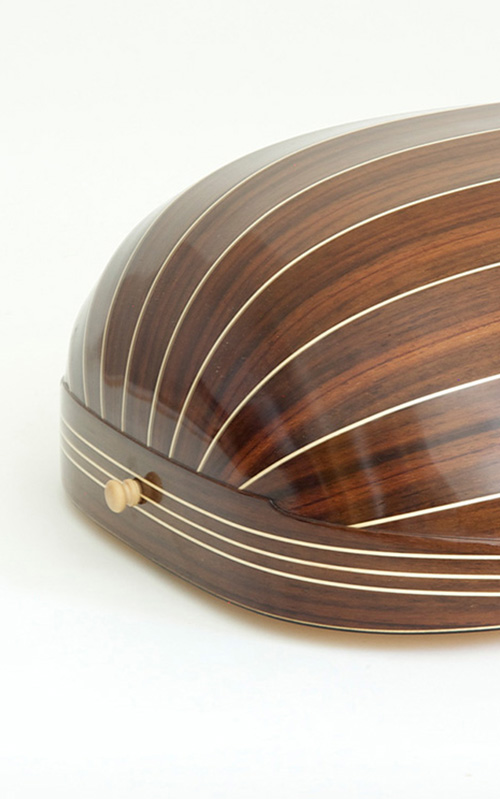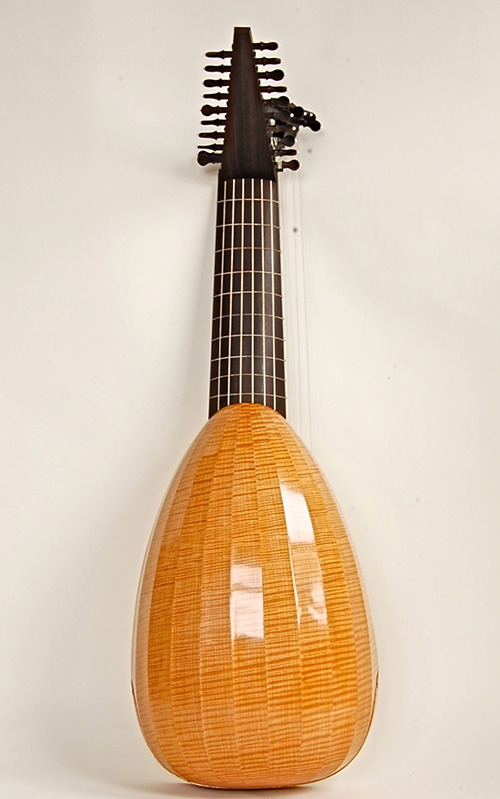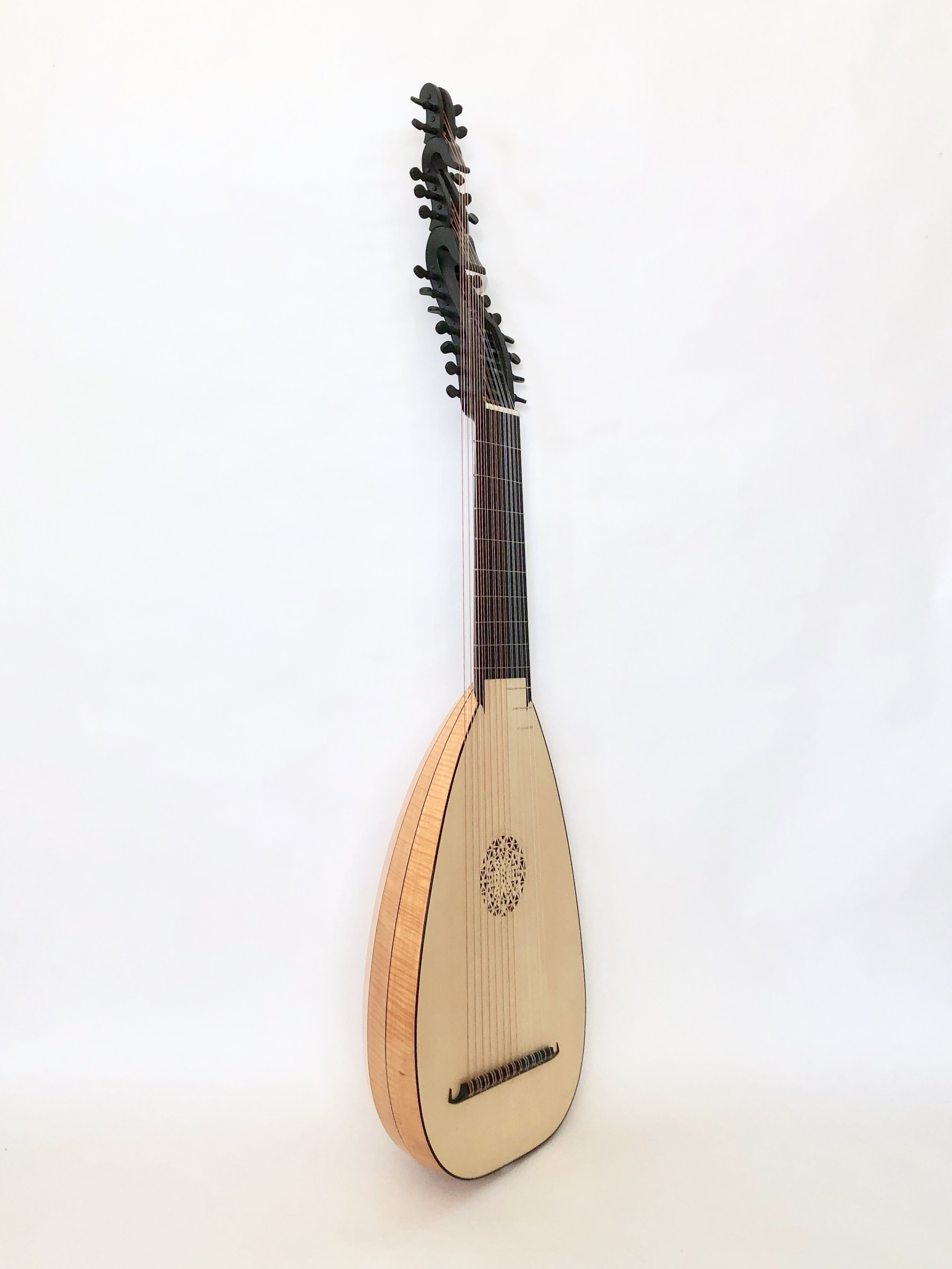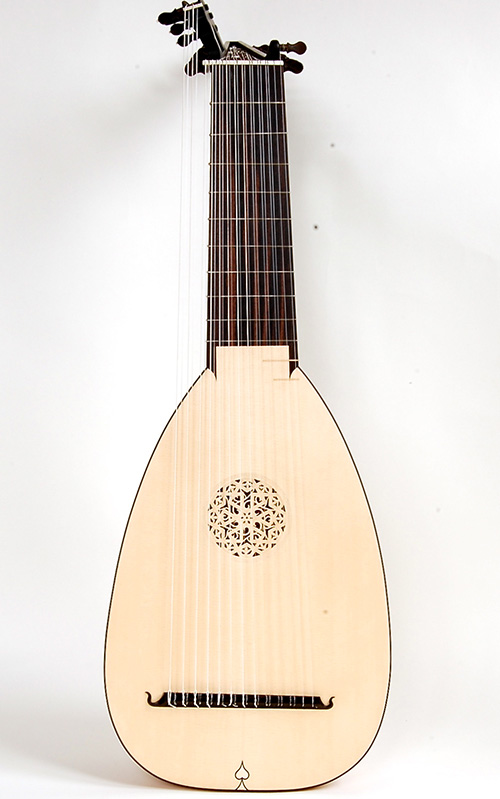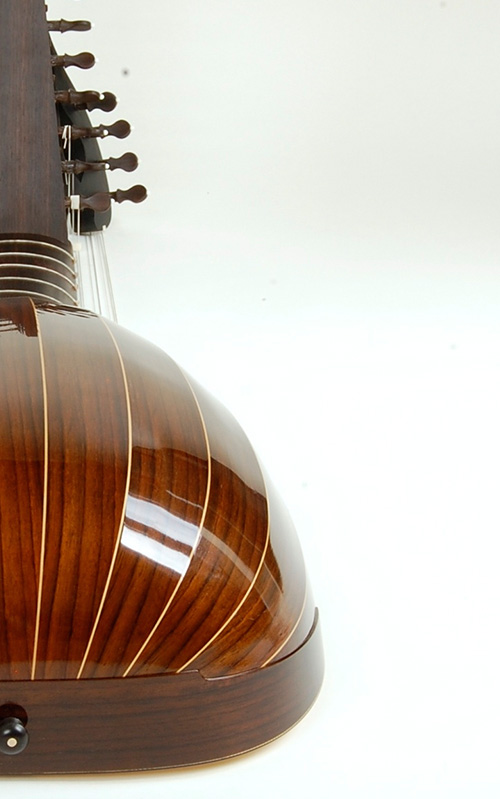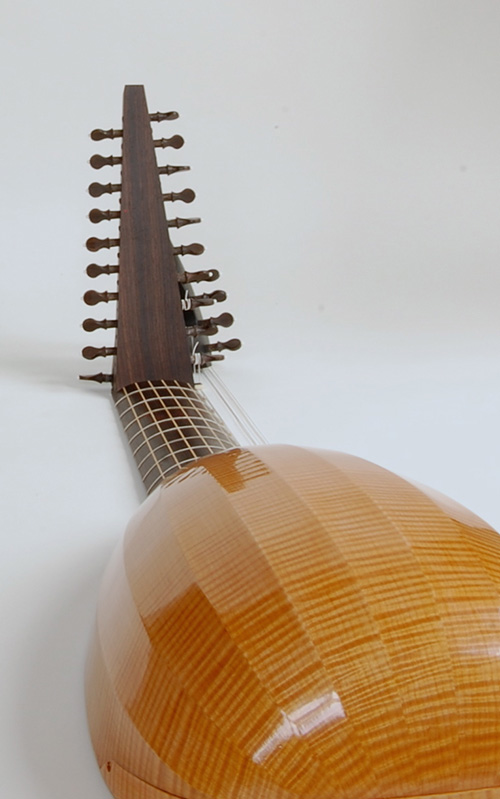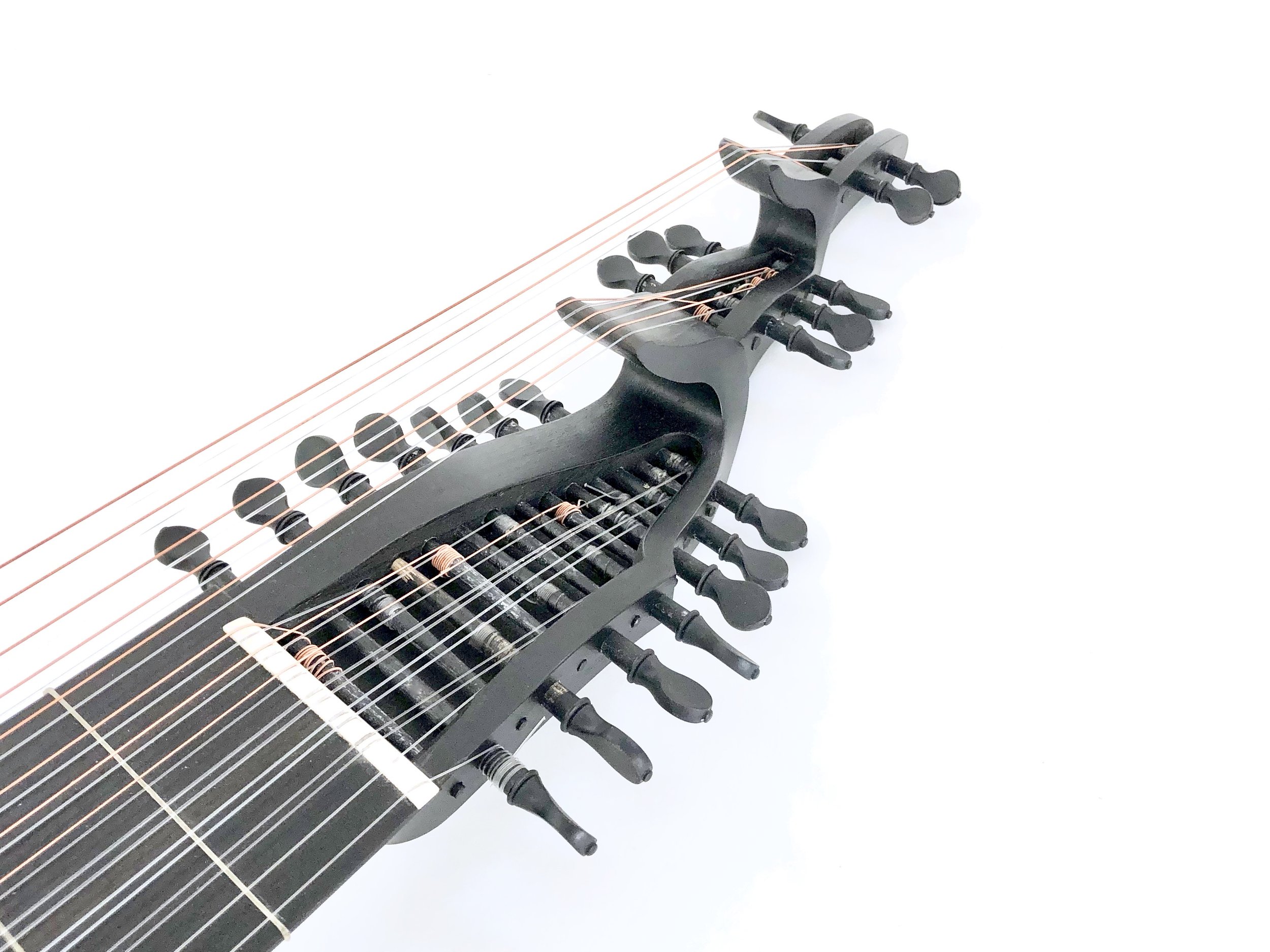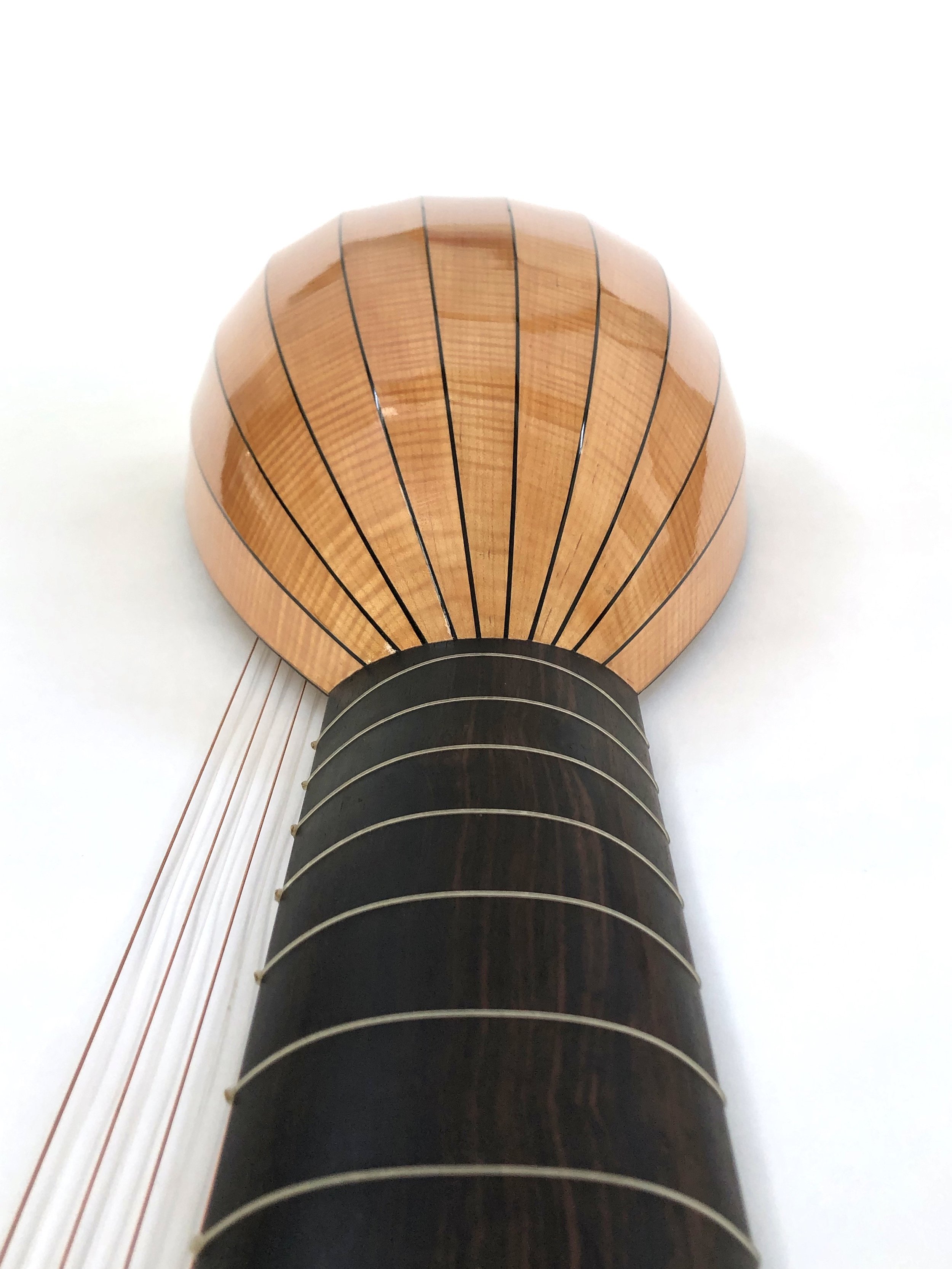Baroque Lutes
11-Course Baroque Lute
A shift in musical tastes and continued experiments with traditional tuning resulted in a new breed of lute tuned in D minor. Curiously, lutenists of the 18th century favored the early Bolognese body forms of Frei and Maler so it seems appropriate to use the so-called “pearl mould” in the 11-course lute. Like its 10-course ancestor, 11-course lutes can be made with a variety of neck extension or with a simple single pegbox.. The 11-course lute is the best option for a player interested mostly in French composers like Mouton, Gaultier and Gallot or German composers like Reusner and Kellner. With minor adjustments and new strings, an 11-course lute can be also be tuned as a 10-course renaissance lute making these instruments surprisingly versatile.
13-Course Baroque Lute
Generally considered the lute in its final form, the 13-course Baroque lute is best suited to the great quantity of German repertoire by Bach, Weiss, Falkenhagen and others. but will serve adequately for earlier French music too. Typically of a longer string length (72-78 cm), German baroque lutes like those by such makers as Hoffman, Schelle, Juack and Widhalm employed a variety of clever neck extensions to improve the response of the lower courses.
